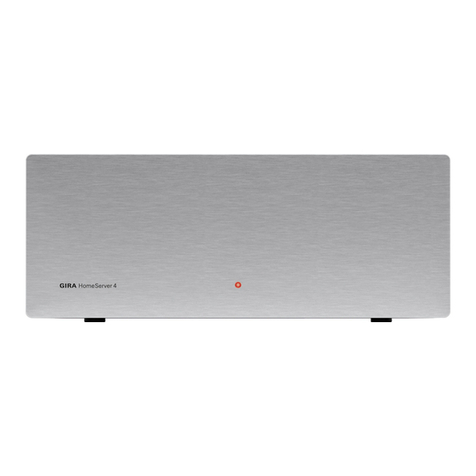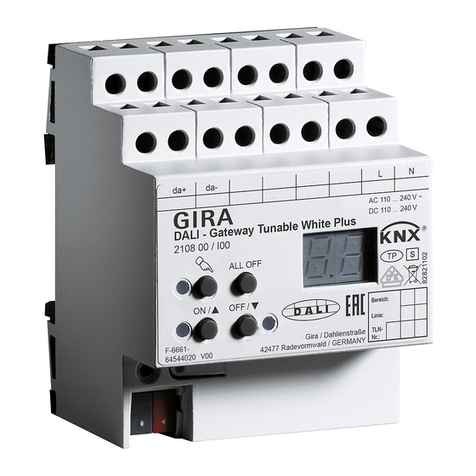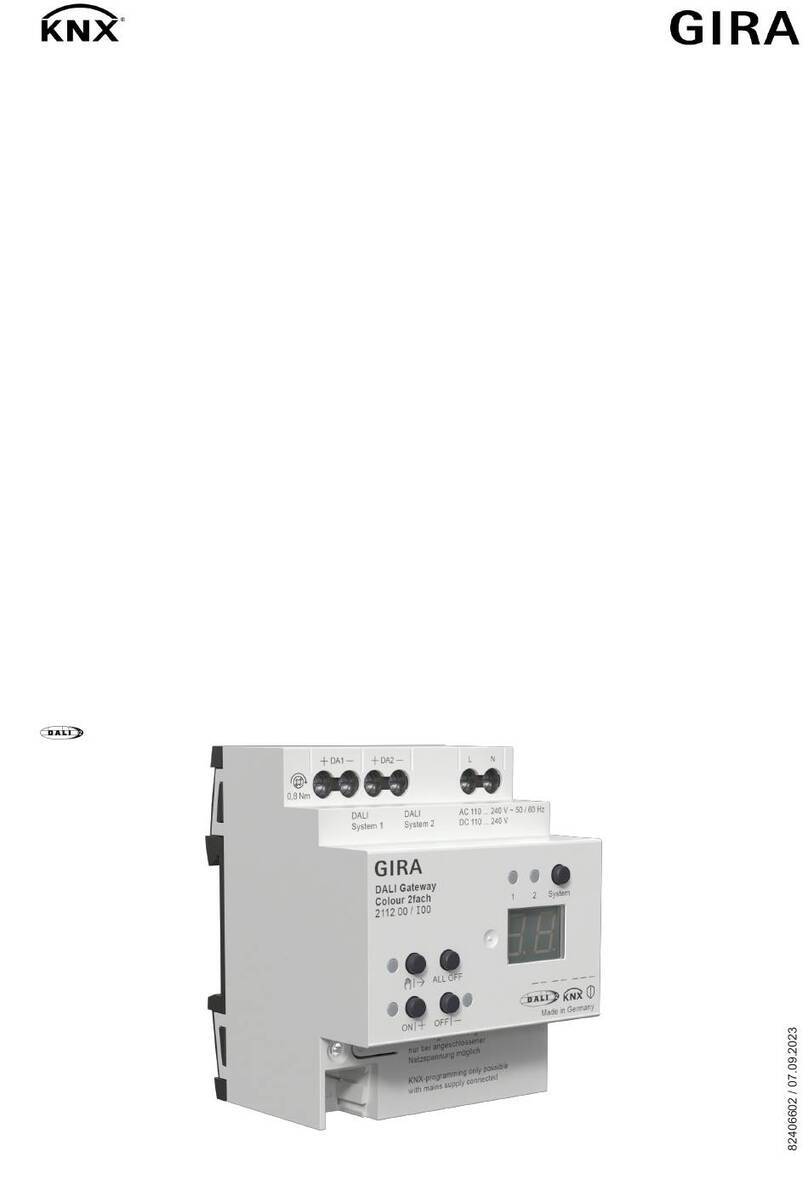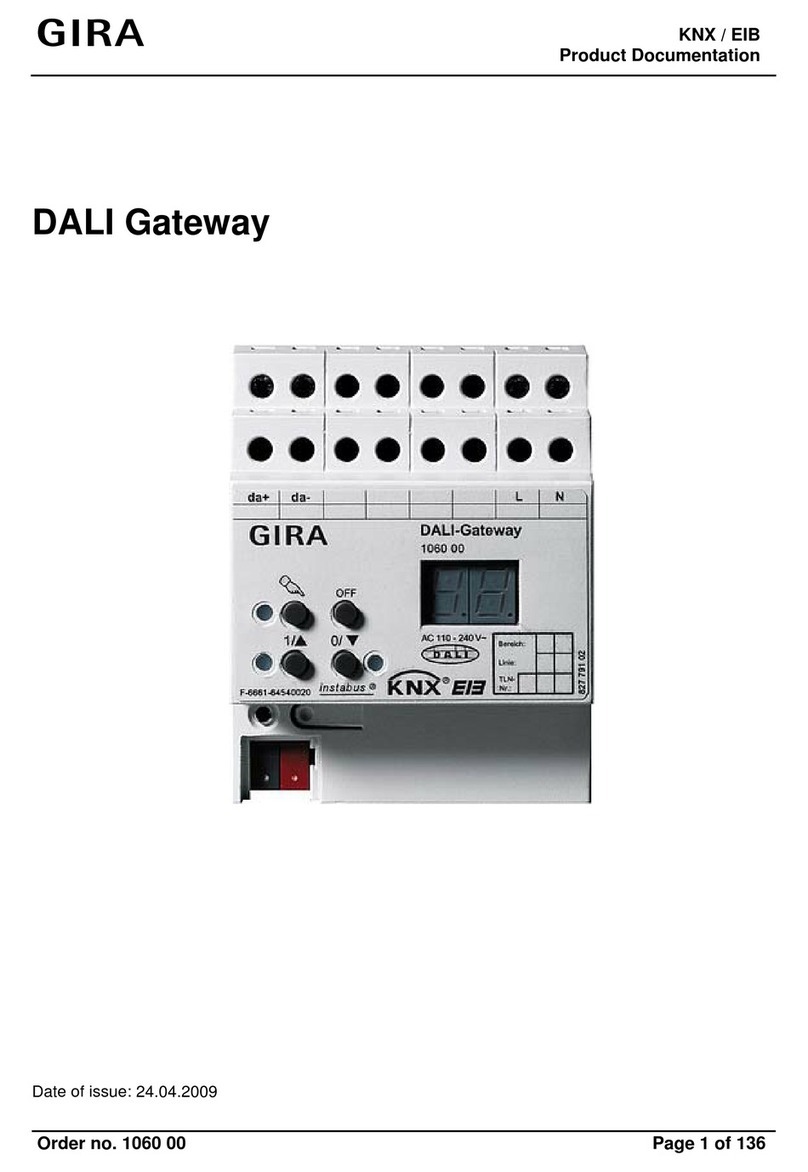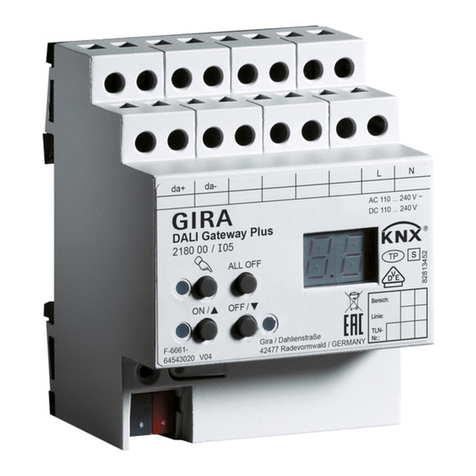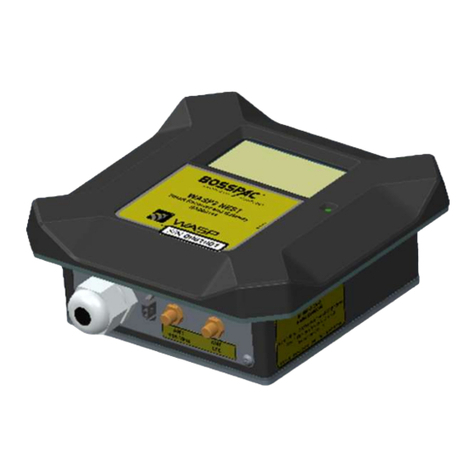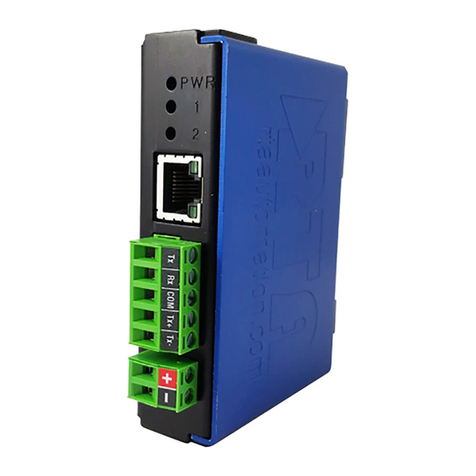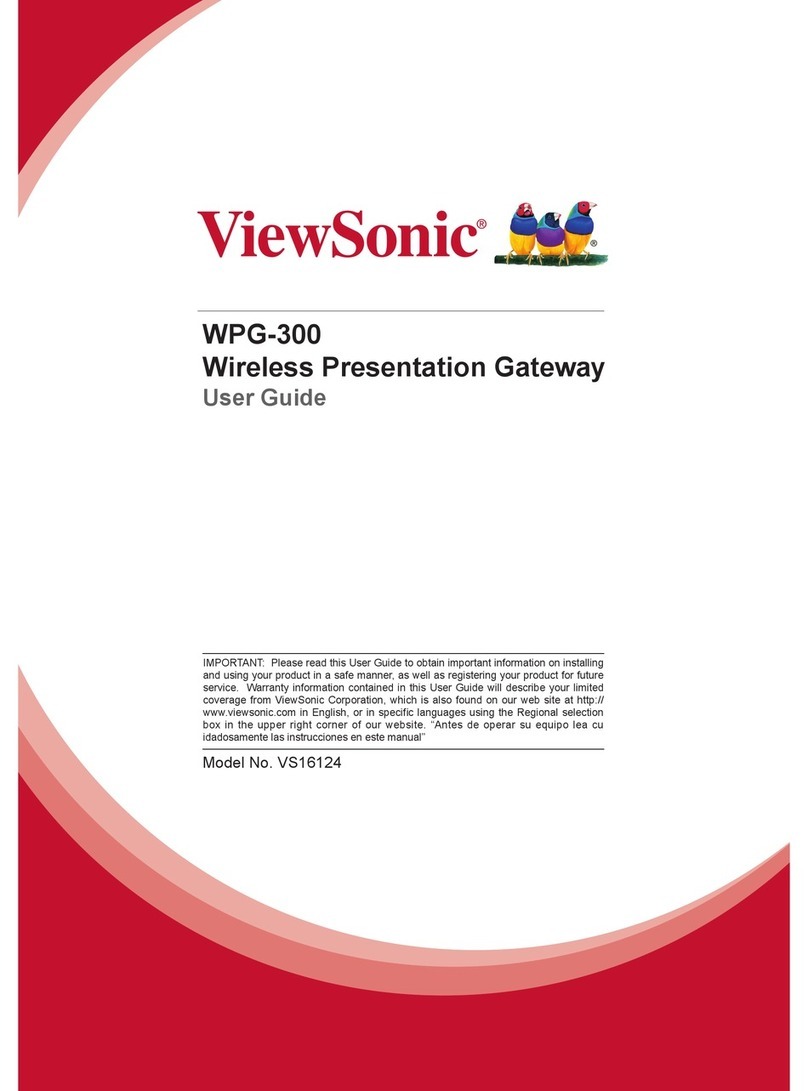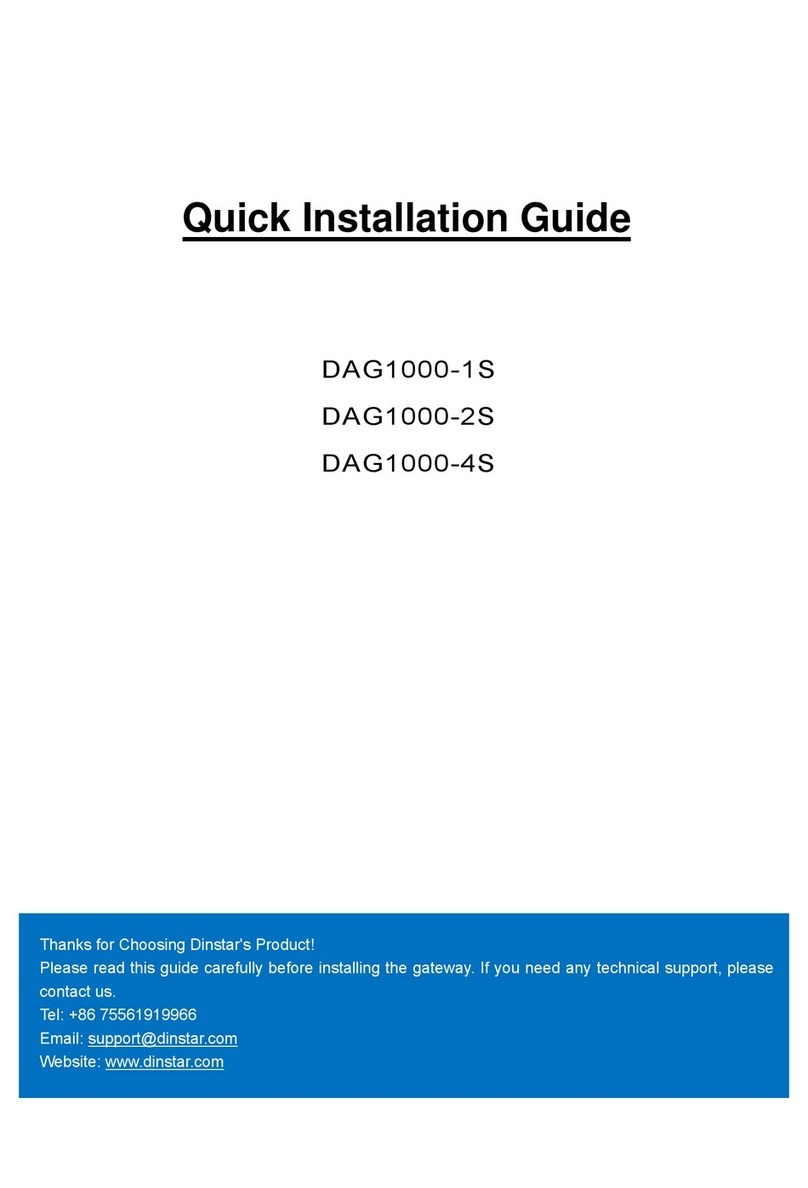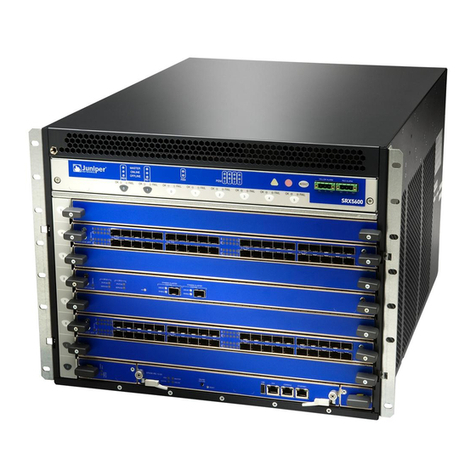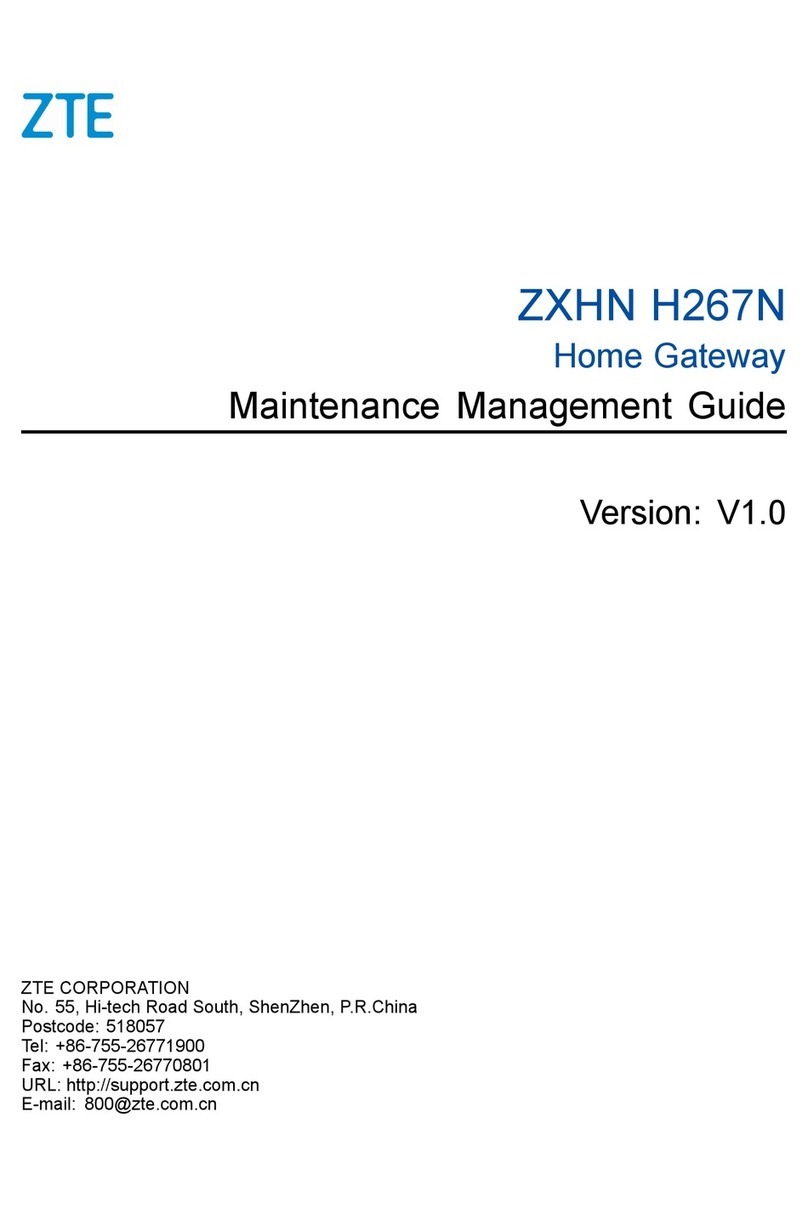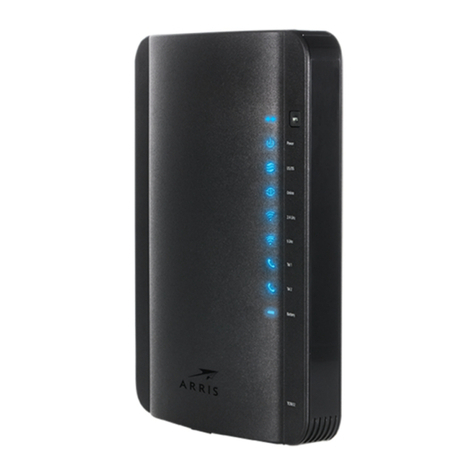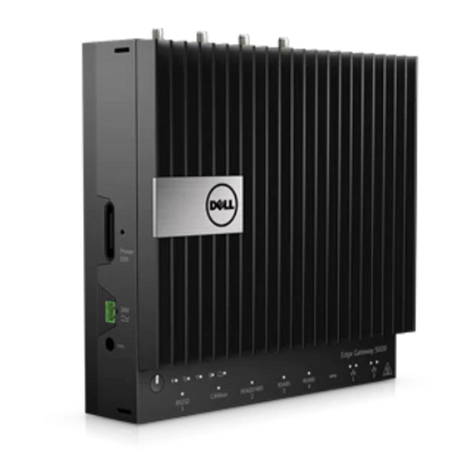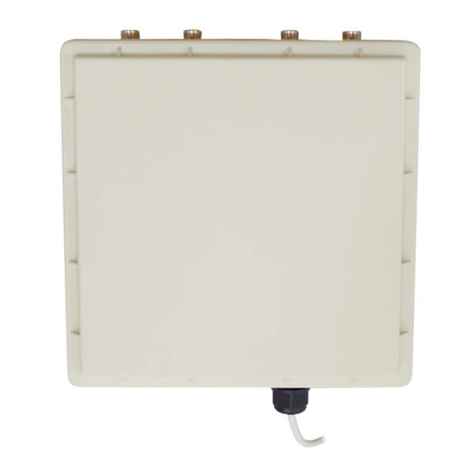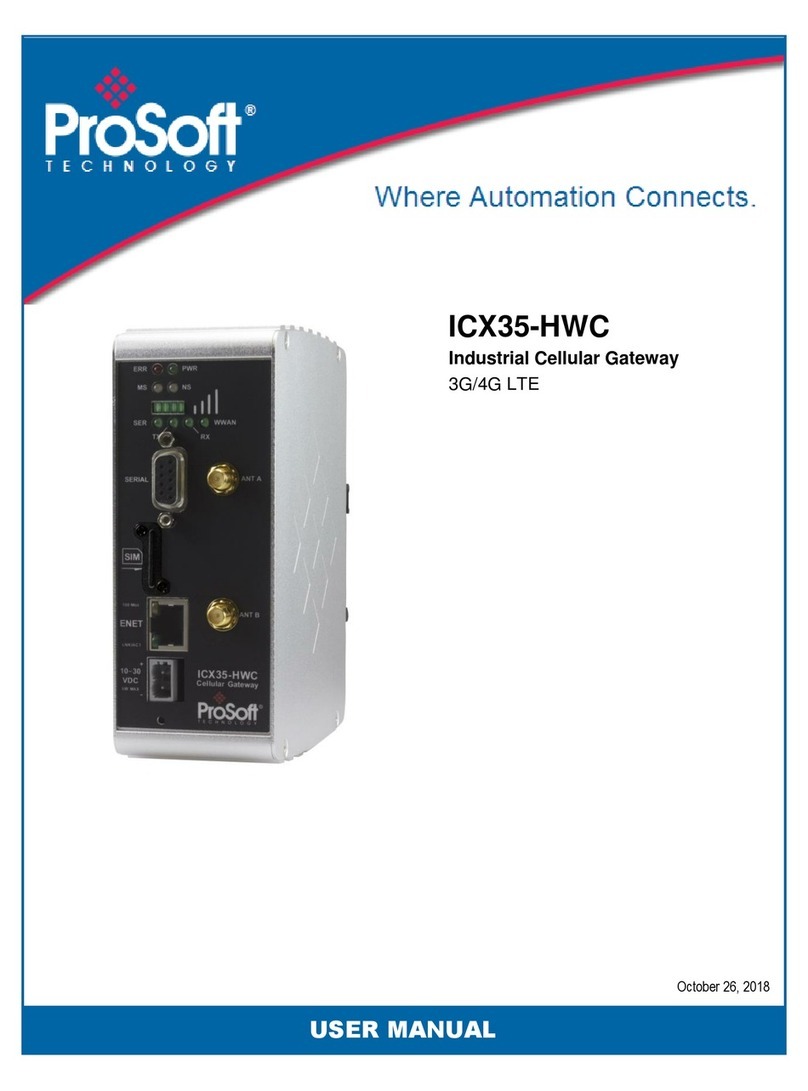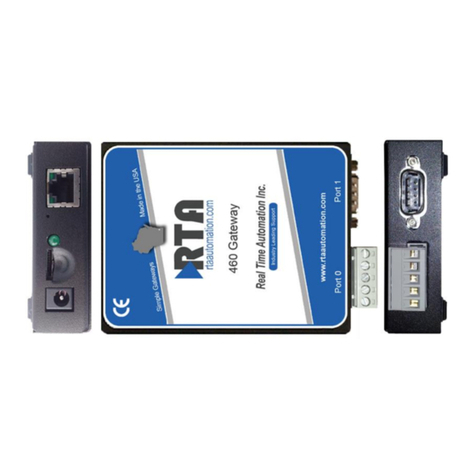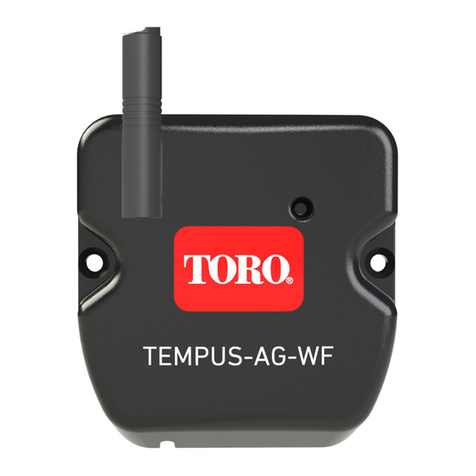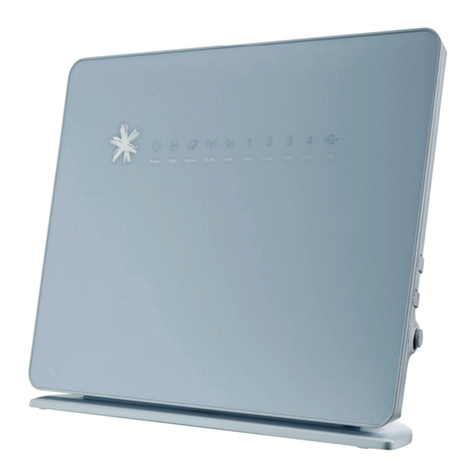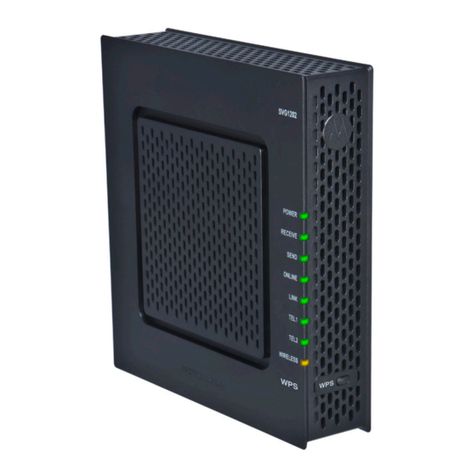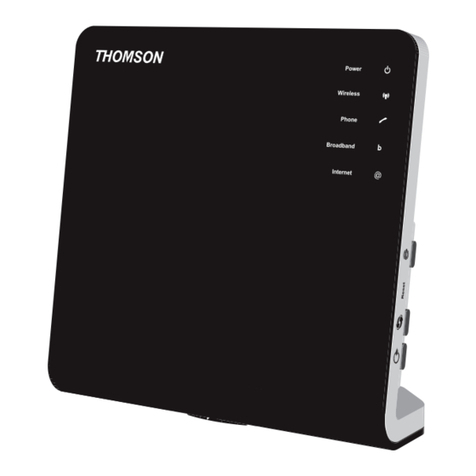Gira 0529 00 Owner's manual

Gira HomeServer
0529 00
Gira FacilityServer
2075 00
Gira HomeServer/FacilityServer
Start-up information


Contents
3
06.2012/V 2.0
Contents
1 Introduction ........................................................................................... 5
1.1 General information about the operating instructions / product support....... 5
1.2 Scope of delivery............................................................................................ 6
1.3 Interfaces and connection options ................................................................. 6
1.4 System requirements ..................................................................................... 7
1.5 Area of application ......................................................................................... 7
1.6 Registration .................................................................................................... 7
1.7 Updates .......................................................................................................... 7
2 Start-up and installation......................................................................... 9
2.1 Basic configuration of the HomeServer in the sample project....................... 9
2.2 Device description.......................................................................................... 10
2.3 Set-up and mounting ..................................................................................... 12
2.3.1 Connection to the mains voltage.................................................................... 13
2.3.2 Connecting to a network................................................................................ 14
2.3.3 Connection to the KNX/EIB ............................................................................ 15
2.3.4 Direct connection to a laptop or PC ............................................................... 16
2.3.5 Connecting the HomeServer to ISDN ............................................................ 16
2.3.6 Connecting the HomeServer for programming.............................................. 17
2.4 Function test and start-up .............................................................................. 18
2.4.1 Function test via Internet browser.................................................................. 18
2.4.2 Function test via the HSClient program ......................................................... 21
2.4.3 Start-up........................................................................................................... 21
3 Operation via HomeServer portal........................................................... 23
3.1 Establish connection to the portal ................................................................. 23
3.2 Changing the name of the HomeServer in the portal .................................... 25
3.3 Change password........................................................................................... 26
3.4 Login was not successful: What must be done? ........................................... 26
3.4.1 "HomeServer is OFFLINE" message when using ISDN ................................. 26
3.4.2 "HomeServer is OFFLINE" message when using a router ............................. 27
3.4.3 "HomeServer is UNKNOWN" message when using a router ........................ 27
4 Expert software...................................................................................... 29
4.1 Installing the Expert software......................................................................... 29
4.1.1 Installation paths (from Expert software Version 2.10) .................................. 31
4.2 Changing the preset IP address ..................................................................... 31
4.3 Programming the HomeServer via the RS232 connection ............................ 32
4.4 Programming the HomeServer via LAN......................................................... 33
4.5 Further work with the Expert software........................................................... 33

Contents
406.2012/V 2.0
5 Important IP addresses.......................................................................... 35
5.1 Opening the user interface ............................................................................ 36
5.2 Calling up lists ............................................................................................... 37
5.3 Operating with WAP ..................................................................................... 37
5.4 Short explanation of important terms ........................................................... 38

Introduction
5
06.2012/V 2.0
1. Introduction
The HomeServer is a gateway for visualising and controlling the complete electrical installa-
tion of buildings equipped with the KNX/EIB system. These can be both private and com-
pany buildings.
The KNX/EIB functions can be monitored and controlled at any time and from everywhere,
externally and internally. Monitoring and control is via state-of-the-art communication media
such as a PC, iPad, iPhone, mobile phone (WAP/HTML), PDA (personal digital assistant), TV
with an Internet connection and devices with an Internet browser. Malfunctions, measured
values and sensor or actuator states can be transmitted by text message and e-mail. Ack-
nowledgement is via the user interface, KNX/EIB or telephone.
A graphical user interface allows easy operation. Building or device states are visualised with
icons and texts which can be positioned freely. Each user may save his own visualisations
and menu structures.
In addition, the HomeServer has a free text and symbol-based menu structure. User groups
are also possible. The HomeServer can be connected to an Ethernet network. Network
cameras can also be integrated via a network so that images can be displayed in visualisa-
tions. The images can also be recorded. All archived data and images can be forwarded via
e-mail and partly via FTP.
1.1 General information about the operating instructions / product support
The information, data, values, etc. contained in these documents may be changed without
prior notification. The illustrations are also non-binding.
Subject to technical modifications!
i
Note: up-to-date information is available on the Gira website.
As the software for the device purchased by you is being continuously further developed
and updated, information in this manual may no longer be up-to-date.
Current product information is always available on the Gira website:
http://www.gira.com
Current software updates and documentation for your product are also available at
http://www.download.gira.de.

Introduction
606.2012/V 2.0
1.2 Scope of delivery
The following items are included in delivery:
–1xHomeServer
–1xmainscable
–1xcableforstart-up
– 1 x start-up manual
1.3 Interfaces and connection options
The HomeServer has the following interfaces and connection options:
– Mains voltage connection 230 V
– RS232 interface for KNX/EIB and programming
– Network connection for RJ45
– ISDN via accessory USB-ISDN adapter / Art. No. 209300

Introduction
7
06.2012/V 2.0
1.4 System requirements
Operation of the HomeServer requires a functional KNX/EIB system. Communication with
the KNX/EIB devices as well as complete monitoring of all events is via the KNX/EIB.
The programming of the HomeServer is via the Expert software, available for free in the
download area of the Gira website. This software can be operated on a standard PC with the
Microsoft® Windows operating system (from XP).
Operation and visualisation of the device (not with WAP) can be implemented by the user
via a corresponding user interface. For this purpose a web or WAP browser or the Client pro-
gram is used, available for free in the download area of the Gira website.
1.5 Area of application
The HomeServer is set up in buildings, in rooms with "normal" humidity and room tempera-
ture. Use for example in damp cellars may negatively affect functionality of the device. The
device is used for monitoring, visualisation and control of KNX/EIB systems.
The software made available in the Gira download area may only be used together with
the HomeServer.
Any other use of the device and software is not permitted. Gira neither assumes legal res-
ponsibility nor provides a guarantee for errors and damage of any kind as a result of improper
use of the device or corresponding software.
1.6 Registration
Please take the time to complete the registration form. The registration form is also found in
the download area of the Gira website. Only registered users can access the portal page or
receive a new password for accessing the portal page if they have forgotten their old pass-
word. In addition, as a registered user you receive technical support and are regularly
informed about downloads, updates (further developments), additional modules and trai-
ning offers. You can also register online via the portal.
1.7 Updates
Updates eliminate technical problems (bug fixing), and also close possible security gaps.
Hacker attacks are possible as soon as your HomeServer communicates with the Internet.
Because these forms of attack change constantly, new updates for the HomeServer may be
required for permanent protection. In this regard, take a regular look at the Gira website to
see whether a new update is available for the HomeServer firmware.

Introduction
806.2012/V 2.0
Please note that Gira assumes no legal responsibility and provides no guarantee of any kind
for problems resulting from obsolete firmware or updated firmware.
Important: Make sure to install the updates!
Please make sure to download the firmware updates from the Gira websites and install
them on your HomeServer, even if you are not registered! Follow the information in these
installation instructions. The installation instructions can be found on the Internet on the
Gira website.
Important: Save retentive data before updating the firmware!
Make sure to save the data in the retentive memory of the HomeServer before updating the
firmware.
The backup is carried out via the Expert software. Follow the information in the Expert help.

Start-up and installation
9
06.2012/V 2.0
2. Start-up and installation
In order to start up the HomeServer, two subject areas must be differentiated:
– Set-up and connection of the HomeServer
– Function test and start-up
Set-up and connection of the HomeServer is described first.
2.1 Basic configuration of the HomeServer in the sample project
For starting up the HomeServer, you first require your start-up computer, on which you have
saved your KNX/EIB project in the ETS for example. Install the start-up software, the so-
called Expert software, on this computer. Create your HomeServer project with all necessary
functions in this software. The data is then transferred to the HomeServer via a direct con-
nection from the start-up PC.
The HomeServer already has a sample project in state of delivery. With this sample project
the HomeServer has an IP address and a net mask. The user interface is designed for a
screen resolution of 1024 x 768. The project is intended to be accessed via the local network.
Although access via the Internet is not planned, it can be implemented quickly if required.
You can find out which users and passwords are saved in the sample project and which lists
can be called up at “Function test via Internet browser” on page 20".
Important: Start-up only to be carried out by an electrical professional!
Connection and start-up of the device may only be carried out by trained electrical profes-
sionals.
Important: Check the current software version before installing!
Make sure to check the current software version of the firmware and Expert software before
you install and start up the HomeServer.
If necessary, download the latest data from the Gira webpage.
Address: http://www.gira.com

Start-up and installation
10 06.2012/V 2.0
2.2 Device description
Fig. 2.1: Operating and control elements on the front of the HomeServer
Control elements on the front of the HomeServer and FacilityServer:
– operating LED that lights up when the device is switched on.
Operating element on the front of the FacilityServer:
– Reset button: The FacilityServer is restarted without power interruption.
i
Note: The HomeServer is switched on via the ON/OFF switch.
If the HomeServer is switched on via the ON/OFF switch, three double signal tones are
heard after at least 20 seconds. Only then is the HomeServer ready for operation. This must
be observed mainly with data transfer from the Expert software, as transfer of data is only
possible after the three double signal tones.
The operational readiness of the HomeServer is also signalled via three double tones after
programming and updating the firmware via the start-up cable.
Please note that the time period for the start of the HomeServer may significantly increase
depending on project size (how many KNX/EIB objects must be scanned). Over 4 minutes
are possible.

Start-up and installation
11
06.2012/V 2.0
Fig. 2.2: Interfaces on the rear of the HomeServer
Interfaces on the rear of the HomeServer:
– Mains connection 230 V (1) and on/off switch
– PS2 connection for mouse (2), without function
– PS2 connection for PC keyboard (3), for service purposes
– DVI connection for PC monitor (4), for service purposes
– RJ45 network connection (5)
– USB interfaces (6), bus access via USB, ISDN adapter connection,
USB keyboard connection, for service purposes
– RS232 interface for KNX/EIB and programming (7)
– Jack socket outlets (8), no function
i
Note: LED at the network connection.
The network connection has a green and a yellow LED. Both LEDs light up or flash when
there is a network connection to the HomeServer. The LEDs only flash when the HomeSer-
ver is switched on. A valid IP address is not required.
745623 8 1

Start-up and installation
12 06.2012/V 2.0
2.3 Set-up and mounting
The HomeServer may only be set up inside buildings. It is not intended and not permitted for
mobile operation.
Set up the HomeServer at a central location so that connection to the mains voltage, to the
network and the KNX/EIB is trouble-free. The location should also be "out of the way" so that
the device does not impede other work being done and so that one of its connections cannot
be interrupted accidentally.
i
Note: Selecting the setup location.
Select a setup location where you can be sure that other work will not cause the mains sup-
ply, network connection or KNX/EIB connection to be interrupted.
i
Note: Sufficient air circulation.
In order to ensure permanent functionality of the HomeServer, a setup location should be
chosen that has sufficient air circulation around the device, enabling operation at room tem-
perature.

Start-up and installation
13
06.2012/V 2.0
2.3.1 Connection to the mains voltage
The HomeServer is connected via the power supply unit to the mains voltage (230 V~).
Important: Device starts up immediately when connected to mains voltage!
The HomeServer starts as soon as it is connected to the mains voltage and the on/off button
on the rear is switched on.
Important: Carry out lightning protection!
In order to avoid damage to the device, we highly recommend protecting the device from
overvoltage in the mains cable, at the network connection, at the ISDN adapter and in the
KNX/EIB voltage access using corresponding protective devices.

Start-up and installation
14 06.2012/V 2.0
2.3.2 Connecting to a network
You require a network distributor and network cable to integrate the HomeServer into an
existing network. Please observe that the network distributor and network cable are not
included in delivery.
You establish a connection between the HomeServer and the network by connecting one
end of the network cable to the network connection of the HomeServer and the other end
to the network distributor for example. Observe that the HomeServer in its state of delivery
has its own IP address and net mask:
– IP address: 192.168.0.11
– Net mask: 255.0.0.0
How to access the user interface after connecting the HomeServer to the local network is
described on “Function test via Internet browser” on page 20 or in the operating instructions
for the client program (available via the Internet at http://www.gira.com).
i
Note: IP address of the HomeServer is already assigned in the network.
If the IP address of the HomeServer in an existing network is already occupied for another
network participant, the IP address for the HomeServer can be changed in the sample pro-
ject. In this case, contact your system administrator so that you can be assigned a free IP
address for the HomeServer.
i
Note: Changing the IP address of the HomeServer.
If the HomeServer has already been in operation in your network with the factory preset
IP address and it was then changed at a later time, the HomeServer may not be recognised
in your network at first. In this case, switch the HomeServer off and then on again.
Please note that it may take several minutes until the complete network recognises the new
IP address.

Start-up and installation
15
06.2012/V 2.0
2.3.3 Connection to the KNX/EIB
The HomeServer can be connected to the KNX/EIB system using the following KNX/EIB
devices (not included in delivery:)
– Instabus flush-mounted bus coupler 2 (Art. No. 0645 00)
– Instabus data interface FT 1.2 (Art. No. 0504 00)
– Instabus RS232 connection cable (Art. No. 0906 00)
– Via LAN with Instabus IP router (Art. No. 2167 00)
– USB data interface (Art. No. 1080 00)
– USB data interface (Art. No. 1070 00)
i
Note: No ETS programming.
The ETS cannot be programmed with the connection options to the KNX/EIB described
here.
If the HomeServer should also operate as an iETS server, the KNX/EIB can also be program-
med using this.

Start-up and installation
16 06.2012/V 2.0
2.3.4 Direct connection to a laptop or PC
You can also connect the HomeServer directly to your start-up PC via LAN if it has a network
connection. For this purpose use a "rotated" network cable (e.g. crossover cable with two
RJ45 plugs). The cable is not included in the scope of supply.
The HomeServer in its state of delivery has its own IP address and net mask:
– IP address: 192.168.0.11
– Net mask: 255.0.0.0
Observe that the PC you connect directly with the HomeServer must have another
IP address.
How to access the HomeServer user interface after you have connected it directly to your
PC via the network connection is described on “Function test via Internet browser” on
page 20 or in the operating instructions for the client program (available on the Internet and
in the setup program).
2.3.5 Connecting the HomeServer to ISDN
To connect the HomeServer to your ISDN system, use the USB-ISDN adapter.
-> Accessory (Art. No. 2093 00)
The scope of supply of the USB-ISDN adapter includes USB and ISDN connection cables.
The length of the supply cable must meet the ISDN specification.
i
Note: Network connection via RS232 interface.
Die direkte Netzwerkverbindung vom PC zum HomeServer erfolgt über die jeweiligen Netz-
werkanschlüsse (RJ45) beider Geräte. For this a crossover cable is used that is not included
in the scope of supply.
The RS232 interface of the HomeServer is solely for programming and connecting to the
KNX/EIB. For programming, connect the start-up PC to the HomeServer with the start-up
cable included in delivery.

Start-up and installation
17
06.2012/V 2.0
2.3.6 Connecting the HomeServer for programming
The connection options for the HomeServer described until now were for simple, fast user
access to the device. In this way you can test the functionality during initial start-up.
However, if the HomeServer is to be used professionally, it must be prepared (programmed)
for its application area. This programming is carried out using the Expert software (see
“Expert software” on page 31"). You install the software on your start-up PC and can then
connect this with the HomeServer either directly or via a network. The programmed data is
then transferred from the start-up PC to the HomeServer.
To connect the start-up PC to transfer data from the Expert software, proceed as follows:
1. Disconnect the HomeServer from the KNX/EIB (if connected). his only applies if the
HomeServer is not connected to the KNX/EIB via USB or KNXnet/IP routing (EIBnet/IP
routing).
2. Connect the end of the start-up cable included in delivery to a COM interface of your PC.
3. Connect the other end of the start-up cable to the RS232 interface of the HomeServer.
Connection for data transfer has now been established. The online help of the Expert soft-
ware describes how to transfer the data from the Expert software.
i
Note: Programming via RS232 interface.
The RS232 interface of the HomeServer is solely for programming and connecting to the
KNX/EIB. For programming, connect the start-up PC to the HomeServer with the start-up
cable included in delivery.

Start-up and installation
18 06.2012/V 2.0
2.4 Function test and start-up
In order to start up the HomeServer, two subject areas must be differentiated:
– Set-up and connection of the HomeServer
– Function test and start-up
You now learn how a function test is carried out and how the HomeServer is started up.
2.4.1 Function test via Internet browser
The HomeServer already has a sample project in state of delivery. Four users have been
saved in this sample project. You can log into the HomeServer using their login data. The
user interface is preset for a screen resolution of 1024 x 768. The project is intended to be
accessed via the local network. Although access via the Internet is not planned, it can be
implemented quickly if required.
The following users are stored in the sample project:
All users saved in the sample project have administrator rights.
Important: Start-up only to be carried out by an electrical professional!
Connection and start-up of the HomeServer may only be carried out by trained electrical
professionals.
User name Password in browser or in client program
admin admin
u1 u1
u2 u2
u3 u3

Start-up and installation
19
06.2012/V 2.0
To access the user interface of the HomeServer, using the address bar of the internet brow-
ser call up the page
http://HS-ip-address/hs
. Then enter one of the above-specified combinations of user name and password to access
the user interface.
To access lists, using the address bar of the internet browser call up
http://HS-ip-address/hslist
. With the HS-ip address you specify the defined IP address of the HomeServer
(192.168.0.11) if you have not changed it.
The following lists can be called up:
To carry out the function test, access the user interface of the HomeServer as a user. The
condition is that you have connected the HomeServer via a network connection to a network
or directly to a start-up PC via a crossover cable. You call up the user interface via an Internet
browser.
hslist List name
login Login protocol
debug Debug page

Start-up and installation
20 06.2012/V 2.0
How to access the user interface of the HomeServer via an Internet browser:
1. Connect the HomeServer via its network connection either to the local network or
directly to the start-up PC (see “Connecting to a network” on page 16).
2. Connect the HomeServer to a power supply (see “Connection to the mains voltage” on
page 15).
3. Switch the HomeServer on (if not already switched on).
4. Start the Internet browser on your start-up PC or on a PC connected to the local net-
work.
5. Enter http://192.168.0.11/hs into the address bar of the browser. The number combi-
nation in the address bar is the IP address of the HomeServer. The Login mask appears
in the browser window.
6. In the Login mask, enter one of the preset users (e.g. u1) and the corresponding pass-
word (e.g. u1). The page is reloaded with Refresh.
7. Click on Log in. The user interface of the HomeServer opens.
i
Note: Preset IP address.
The number combination that you specify in the address bar is the IP address of the Home-
Server. If you have changed the IP address of the HomeServer specified by the sample pro-
ject, you must enter the modified address as described in section 5.
Other manuals for 0529 00
1
This manual suits for next models
1
Table of contents
Other Gira Gateway manuals
